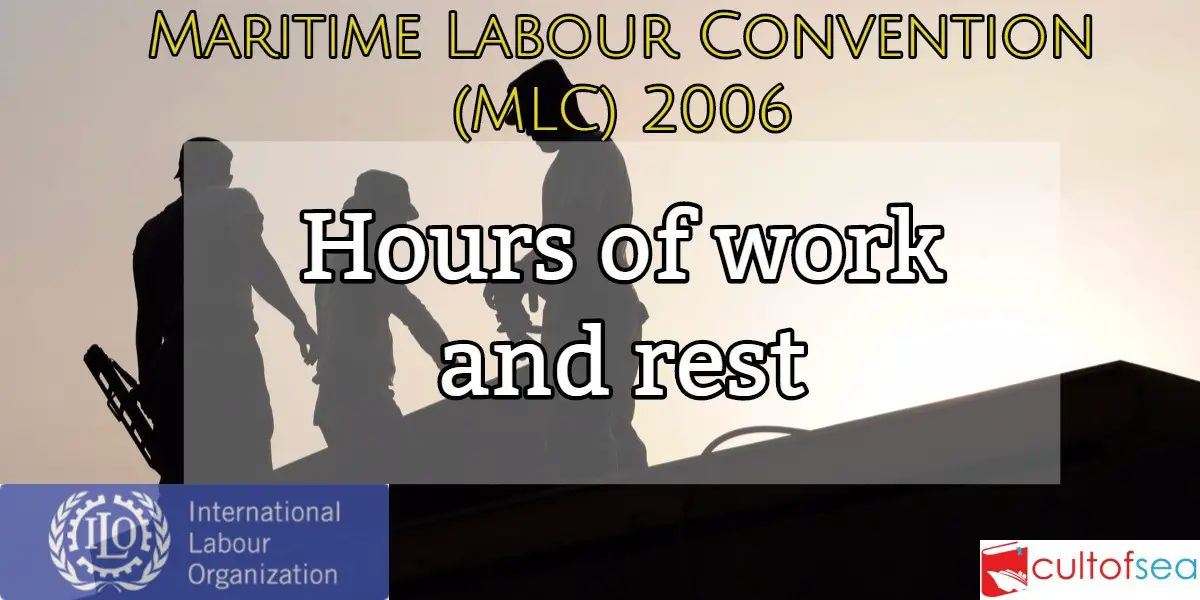Regulation 2.3 – Hours of work and rest (Conditions of employment) Purpose: To ensure that seafarers have regulated hours of work or hours of rest 1. Each Member shall ensure that the hours of work or hours of rest for seafarers are regulated. 2. Each Member shall establish maximum hours of work or minimum hours of rest over given periods that are consistent with the provisions of the Code. Standard – Hours of work and hours of rest 1. For the purpose of this Standard, the term: (a) hours of work means the time during which seafarers are required to do work on account of the ship; (b) … [Read more...]
